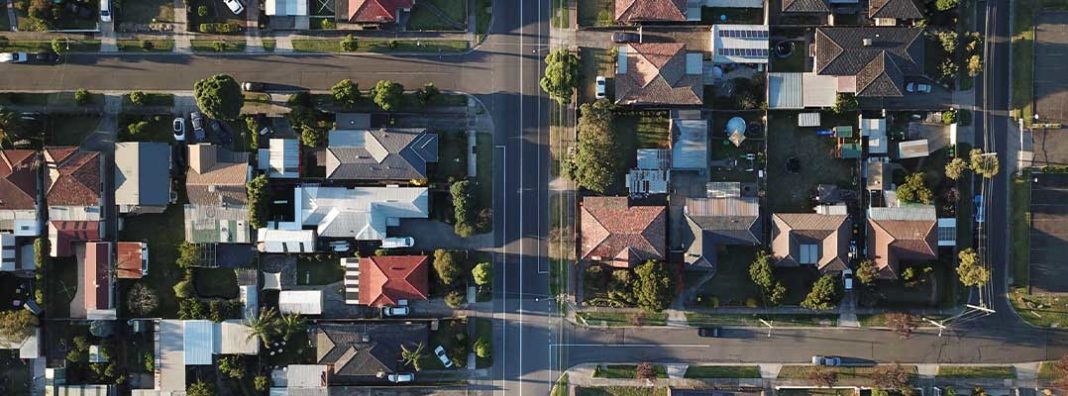
Thanks to low overhead costs and high flexibility, home-based businesses are an increasingly popular option for aspiring entrepreneurs. Amazon, Apple, Disney and some of the most successful companies in the United States were started at home. According to Small Business Trends, 69 percent of entrepreneurs in the US start their business out of their home. They clearly play an important role in the economy. And even when they don’t grow to the size of Amazon, they can still be an important source of income for people looking for flexibility.
Source: Small Business Trends
But, the story of home-based businesses isn’t just about entrepreneurs. It’s also about their neighbors.
Many neighbors aren’t happy about the potential traffic, parking issues, noise, and unsightly equipment that might accompany a home-based business. Who can blame them? After all, no one wants their street parking eaten up by their neighbor’s employees. Nor do they want their once quiet street to become busy with their neighbor’s clients. Who wants to listen to the humming of equipment all day? Many worry that the potential spill-over effects of home-based businesses will impact the comfort and peace of their neighborhood.
Concerns like these are often used to justify residential zoning regulations across the country. In order to avoid issues like noise, pollution, and traffic, many cities have passed zoning laws that prohibit home-based businesses altogether. By restricting things like the number of employees a home-based business can employ, the number of clients that can visit each day, and how many square feet of your home can be devoted to your business, these regulations limit opportunity for people trying to make a hard-earned dollar.
For example, in order to operate a home-based business in Salt Lake City, Utah, entrepreneurs have to comply with a list of requirements that include the following:
“Direct retail sales are prohibited”
“The home occupation conducted at the residence shall not involve more than one employee from outside the home”
“Home occupations involving visitations from pedestrian or vehicular traffic shall only be conducted between the hours of 8:00 am and 10:00 pm”
“Any home occupation requiring client(s) visitation shall not occur at a frequency of greater than two clients per hour, and no more than one client may be served at one time and not more than one place of vehicular parking shall be occupied by a client at any time.”
These typical zoning restrictions are enacted in cities across the US and, depending on the kind of restrictions, can be crippling for entrepreneurs working to start a business from home. Though zoning restrictions are meant to keep neighborhoods safe and protect property values, they often go beyond these goals and can shut down even the most innocuous home-based businesses that create no traffic, noise, or pollution.
In an article for Cato’s Regulation Magazine, Christina Sandefur tells the story of Kim O’Neil, who ran a medical billing office from her home. Her business was thriving and being at home allowed her the flexibility she needed to care for her ailing father and her small children. According to Sandefur, “her business had no signs, no commercial equipment, and she did not sell goods or store inventory. No customers came to her home, so she was not causing any noise, traffic, or parking issues. And though she did employ workers, they did not work out of her house.”
Despite the fact that the business had no discernible impact on her neighbors, city officials started a legal game of tug-of-war. They required Kim to do things like get special use permits and build a commercial parking lot that nobody would ever use. In the end, it was easier for Kim to rent a commercial space, an expense to satisfy overbearing city officials. She described the experience as, “one of the most stressful…of my life.”
Kim’s story illustrates how zoning laws often go beyond creating a quiet, peaceful neighborhood. They limit what people can do in the privacy of their homes, no matter how harmless the activity.
So, what is the middle ground? How do we address concerns about protecting neighborhoods while still allowing home-based entrepreneurs to flourish?
Research suggests that the design of particular zoning ordinances matters in determining the impact on home-based businesses. Researchers Nolan Gray and Olivia Gonzalez explored the zoning ordinances of 12 different cities across the US. They found that some cities, like Charlotte, North Carolina, have enacted “tight, across-the-board restrictions on area, mechanical equipment, off-site employees, and sales,” that can be quite burdensome. Other cities, like San Diego, have focused on the likely impacts of a particular business but does not have as many blanket restrictions on home-based entrepreneurship in general.
One way to reduce the burden of zoning restrictions on home-based businesses would be carefully crafted legislation that focuses on actual impacts. For example, limiting noise or traffic and still allowing for retail sales and employees to work out of the home would be a good compromise. Such rules would likely address the core concerns behind zoning without creating undue restrictions on the opportunity to run a business from home.
Another suggestion is to allow neighbors to work things out among themselves. This approach may seem radical or over-simplistic, but it is actually one of the most effective ways to find arrangements that work for all parties involved.
Nobel Prize-winning Economist Ronald Coase wrote about the power of allowing individuals to negotiate with each other to find mutually beneficial agreements. He argued that even in the absence of government involvement, a farmer whose crops were damaged by a nearby rancher would be incentivized to negotiate with the rancher. He could offer to pay the rancher to remove extra cattle causing the damage. And as long as the payment offered was greater than the rancher’s return on that additional cow, the rancher would be inclined to accept it.
Although Coase applied his logic to rural America, it can also be applied to residential areas in cities across the US. Top-down policies like restrictive zoning requirements underestimate the ability of neighbors to work things out among themselves in ways that make the most sense for them and their community. Policymakers should keep this in mind when considering alternatives to exclusionary zoning, and not only balance competing preferences among neighbors but embrace a system that allows them to take an active, cooperative role in finding solutions.


